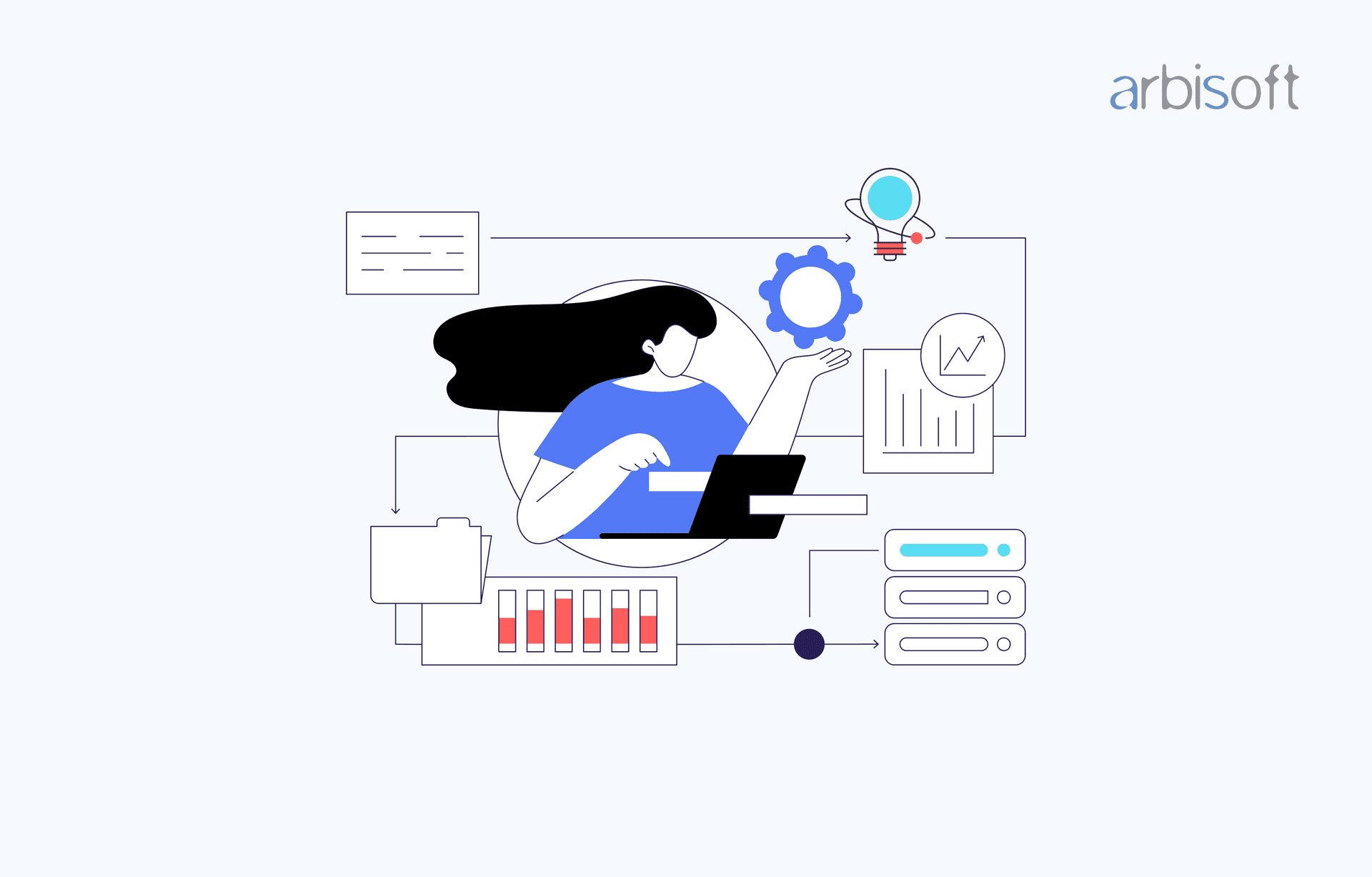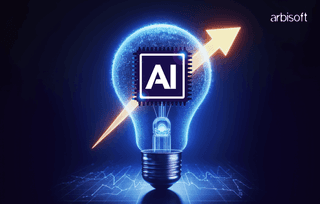We put excellence, value and quality above all - and it shows




A Technology Partnership That Goes Beyond Code

“Arbisoft has been my most trusted technology partner for now over 15 years. Arbisoft has very unique methods of recruiting and training, and the results demonstrate that. They have great teams, great positive attitudes and great communication.”
Databricks Demystified: Your Guide to Data Innovation

Data innovation helps businesses understand their data, make smart decisions, and stay ahead of competitors. Today's market demands the ability to quickly analyze and interpret large amounts of data. A study by McKinsey found that data-driven organizations are 23 times more likely to gain new customers, six times more likely to keep them, and 19 times more likely to be profitable.
Good data management and analysis allow companies to improve operations, personalize customer experiences, and develop new products and services. Among the many tools that support data innovation, Databricks is a standout platform. It combines the power of cloud computing with the flexibility of Apache Spark. Let’s read about Databricks in detail.
What is Databricks?
Databricks is a cloud-based platform for data engineering and analytics. It helps businesses handle large amounts of data, perform advanced analytics, and build machine learning models. Built on Apache Spark, Databricks offers a unified workspace where data engineers, data scientists, and business analysts can work together easily. The platform supports several programming languages, including Python, Scala, SQL, and R, making it accessible to many users.
In 2023, Databricks was named a Leader in the Gartner Magic Quadrant for Data Science and Machine Learning Platforms for the fourth year in a row. This recognition highlights its effectiveness and reliability. Databricks also integrates with major cloud services like AWS, Azure, and Google Cloud Platform, allowing businesses to use their existing infrastructure while efficiently scaling their data operations.
Key features of Databricks
Databricks, as a unified analytics platform, offers a wide range of features designed to simplify and enhance big data and machine learning workflows. Here are some of the key features of Databricks:
1. Unified Data Analytics Platform
- Combines data engineering, data science, and business analytics into a single platform.
- Supports collaboration across different roles within the organization.
2. Apache Spark Integration
- Built on top of Apache Spark, providing high-performance data processing and analytics capabilities.
- Optimized for both batch and streaming data.
3. MLflow Integration
- Facilitates the entire machine learning lifecycle, including experimentation, reproducibility, and deployment.
- Supports various machine learning frameworks and libraries.
4. Delta Lake
- Provides ACID transactions, scalable metadata handling, and unification of streaming and batch data processing.
- Ensures data reliability and consistency.
5. Collaborative Notebooks
- Interactive notebooks support multiple languages (e.g., Python, Scala, SQL, R) for data exploration and analysis.
- Enables real-time collaboration among data teams.
6. AutoML
- Automated machine learning tools that help build and optimize machine learning models without extensive manual intervention.
- Simplifies the model development process.
7. Runtime for Machine Learning
- Optimized environments with pre-configured libraries and frameworks for machine learning and deep learning.
- Improves productivity and reduces setup time.
8. Data Engineering
- Provides robust tools for ETL (extract, transform, load) processes.
- Simplifies the creation and management of data pipelines.
9. Scalability and Performance
- Offers scalable compute and storage resources, allowing users to handle large datasets and complex computations efficiently.
- Dynamic scaling based on workload requirements.
10. Security and Compliance
- Provides enterprise-grade security features such as role-based access control, encryption, and audit logging.
- Compliance with various industry standards and regulations.
11. Integrations and Ecosystem
- Integrates with various data sources, BI tools, and other cloud services.
- Extensible platform that supports third-party tools and custom integrations.
12. Interactive Dashboards
- Enables the creation of interactive dashboards and visualizations for data insights and reporting.
- Facilitates data-driven decision-making.
How to Get Started with Databricks
Databricks generally offers a 14-day free trial that you can use on your preferred cloud platform like Google Cloud, AWS, or Azure. Follow these steps to set up Databricks on Google Cloud Platform.
Step 1: Search for Databricks
- Open the Google Cloud Platform.
- Go to the Marketplace.
- Search for "Databricks."
- Sign up for the free trial.

Step 2: Start the Trial Subscription
- Once you start the trial, you will get a link from the Databricks menu item in Google Cloud Platform.
- Use this link to manage the setup on the Databricks account management page.
Step 3: Create a Workspace
- After setting up the trial, you need to create a Workspace in Databricks.
- The Workspace is where you access your data and tools.
- To do this, you will need to use the external Databricks web application (Control Plane).

Step 4: Set Up a Kubernetes Cluster
- To create a Workspace, you need to set up a three-node Kubernetes cluster in your Google Cloud Platform project using Google Kubernetes Engine (GKE).
- This cluster will host the Databricks Runtime, which is called the Data Plane.
- It's important to know that your data always stays in your cloud account and in your own data sources (Data Plane), not in the Control Plane. This way, you keep control and ownership of your data.

Step 5: Create a Table in Delta Lake
- To create a table in Delta Lake, you can upload a file, connect to supported data sources, or use a partner integration.

Step 6: Create a Cluster to Analyze Your Data
- To analyze your data, you need to create a "Cluster."
- A Databricks Cluster is a combination of computation resources and settings where you can run jobs and notebooks.
- You can use a Databricks Cluster for tasks like streaming analytics, ETL pipelines, machine learning, and ad-hoc analytics.

Step 7: Understand the Databricks Runtime
- The runtime of the cluster in Databricks is based on Apache Spark.
- Most of the tools in Databricks use open-source technologies and libraries like Delta Lake and MLflow.
Isn’t Snowflake the same thing as Databricks?
They’re similar but not quite the same. Check out a detailed comparison between the two to decide which platform suits your business the best.

Know Your Platforms Before Making the Jump!
Contemplating a choice between Databricks and Snowflake? We’ve got you covered.

Benefits of Databricks
Now that we understand what Databricks is, let's explore its benefits.
- Unified Data Analytics Platform: Databricks provides a comprehensive platform for data engineers, data scientists, data analysts, and business analysts, enabling them to collaborate efficiently.
- Flexibility Across Ecosystems: It offers great flexibility, supporting various cloud ecosystems including AWS, GCP, and Azure.
- Data Reliability and Scalability: Databricks ensures data reliability and scalability through Delta Lake, which helps maintain the integrity and performance of your data.
- Wide Framework and Library Support: It supports popular frameworks such as sci-kit-learn, TensorFlow, and Keras. Additionally, it is compatible with libraries like matplotlib, pandas, and NumPy, as well as scripting languages such as R, Python, Scala, and SQL. Databricks also integrates with tools and IDEs like JupyterLab and RStudio.
- Automate ML Tasks and Manage Life Cycles: With MLflow, you can leverage AutoML to automate machine learning tasks and manage the entire lifecycle of your models efficiently.
- Data Analysis & Presentation: Databricks comes with basic built-in visualization tools that help in data analysis and presentation.
- Optimization of ML Models: It supports Hyperopt, which allows for hyperparameter tuning to optimize machine learning models.
- Improved Collaboration & Version Management: Databricks integrates smoothly with version control systems like GitHub and Bitbucket, facilitating better collaboration and version management.
- Superior Performance: Databricks is 10 times faster than other ETL tools, making it a highly efficient choice for data processing tasks.

Common Uses of Databricks
Databricks is a powerful tool used in many different ways across various industries. Here are some common uses explained in simple terms:
1. Data Engineering
- Building Data Pipelines: Databricks helps set up systems to move data from one place to another, cleaning and organizing it along the way so it's ready for analysis.
- Handling Big Data: It can manage and process large amounts of data quickly and efficiently.
2. Data Science and Machine Learning
- Creating Models: Data scientists use Databricks to build models that can predict things like future trends or customer behavior.
- Team Collaboration: Multiple people can work together on the same project using Databricks, making it easier to build and improve models.
- Automating Tasks: Databricks can automatically handle repetitive tasks involved in training and using these models, saving time and reducing mistakes.
3. Business Intelligence
- Building Dashboards: Businesses use Databricks to create interactive displays that show important data and performance indicators.
- Making Reports: It helps in making detailed reports that summarize data insights, which are crucial for making smart business decisions.
4. Real-Time Analytics
- Processing Live Data: Databricks can handle data that is continuously generated, like social media updates or sensor data. This allows businesses to get insights from the data as it comes in.
- Quick Reactions: By analyzing data in real-time, companies can quickly respond to new information.
5. Data Integration
- Connecting Different Data Sources: Databricks can bring together data from various places, like on-premises databases, cloud storage, or other applications.
- Unified Data View: This creates a single, comprehensive view of all the data, making it easier to manage and analyze.
6. Advanced Analytics
- Performing Complex Analysis: Researchers and analysts use Databricks for in-depth analysis to find hidden patterns and relationships in data.
- Analyzing Big Data: It is especially useful for working with very large datasets that traditional tools can't handle well.
7. ETL (Extract, Transform, Load) Processes
- Extracting Data: Databricks can pull data from different sources.
- Transforming Data: It cleans and prepares the data.
- Loading Data: Finally, it puts the cleaned data into a system where it can be analyzed or reported.
By using Databricks in these ways, businesses can understand their data better, make smarter decisions, and stay ahead in their industries.
Lastly
Databricks is a powerful platform that enables data innovation through its unified workspace, scalability, and collaboration tools. Whether you're a data engineer, data scientist, or business analyst, Databricks provides the tools you need to process, analyze, and derive insights from your data. Get started today and unlock the potential of your data with Databricks.
























